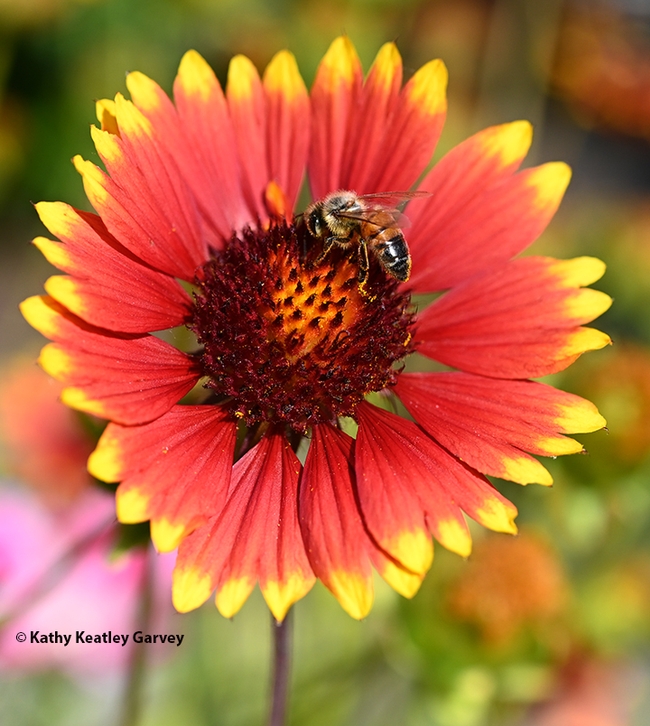- Author: Kathy Keatley Garvey

For the beekeepers that's easy. They dislike the pests known as "wax moths" and their larvae.
The female wax moths hang around the hives at night and when the opportunity arises, slip in to lay their eggs. If the colony is weak, this pest can take over.
The honey bee bible, The Hive and the Honey Bee (Dadant Publication), says the wax moth female "produces less than 300 eggs during her life span of 3 to 30 days, but a few lay as many as 2000 eggs. Mated females fly to beehives one to three hours after dark, enter, and lay eggs until they leave shortly before daylight."
The Hive and the Honey Bee authors relate that "the presence of the wax moth larvae usually signals a major problem such as queenlessness, an infectious disease, poisoning and starvation."
In his book, Honey Bee Biology (2023 Princeton University), bee scientist Brian Johnson, associate professor, UC Davis Department of Entomology and Nematology, touches on colony pests in addition to his indepth coverage of everything from molecular genetics, development, and physiology to neurobiology, behavior, and pollination biology.
Johnson writes in part: "The greater wax moth (Galleria mellonella) and the lesser wax moth (Achroia grisella) are old and well-known pests of honey bees. The female moth lays her eggs on the comb and the larvae consume the wax, pollen and honey. In nature, these pests are mainly a threat to weak colonies, as strong colonies can kill their larvae." He goes on to mention that beekeepers who inadequately store large amounts of wax combs may be subject to wax moth infestations. He recommends air tight storage and the use of mothballs.
The larvae are not always unwanted. They've been introduced as an alternative model to study microbial infections.
So, in keeping with National Moth Week, the Bohart Museum of Entomology is hosting its annual Moth Night from 7 to 11 p.m. on Saturday, July 20 at its headquarters in Room 1124 of the Academic Surge Building, 455Crocker Lane, UC Davis. Inside, Jeff Smith, curator of the Bohart's Lepidoptera collection, and his colleagues will be displaying moth specimens and answering questions. Outside, Bohart research associate John "Moth Man" De Benedictus will set up a blacklighting display, complete with white sheet and a UV light to attract moths and other night-flying insects.
The open house is free and family friendly. Also free: hot chocolate and cookies, according to Tabatha Yang, education and outreach coordinator.
Founded in 1946, the Bohart Museum is the home of a global collection of eight million insect specimens. It also features a petting zoo (including Madagascar hissing cockroaches, walking sticks and tarantulas) and a gift shop stocked with insect-themed t-shirts, hoodies, books, posters, jewelry and more. The museum is directed by Professor Jason Bond, the Evert and Marion Schlinger Endowed Chair, UC Davis Department of Entomology and Nematology, and associate dean, Agricultural Sciences, UC Davis College of Agricultural and Environmental Sciences.
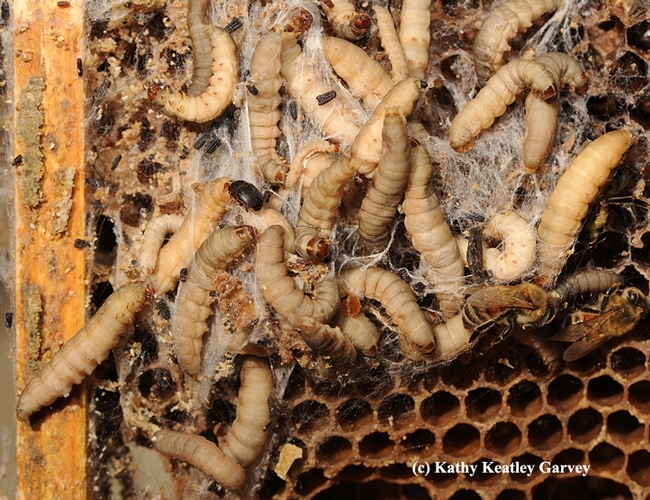
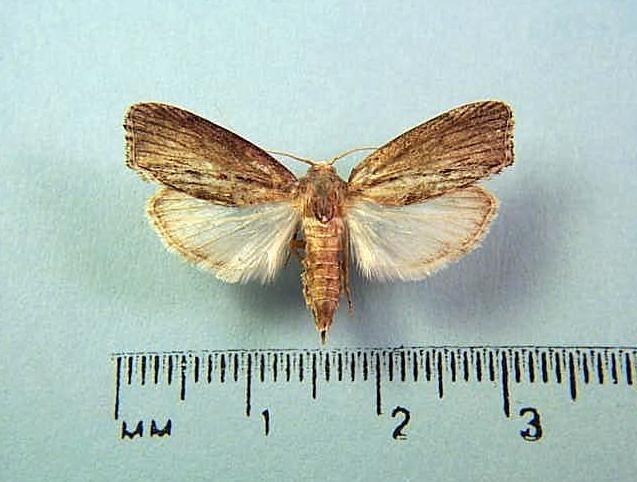
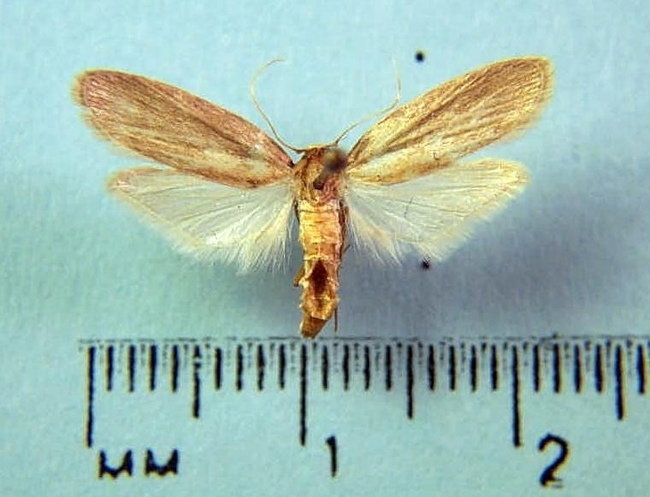
- Author: Kathy Keatley Garvey
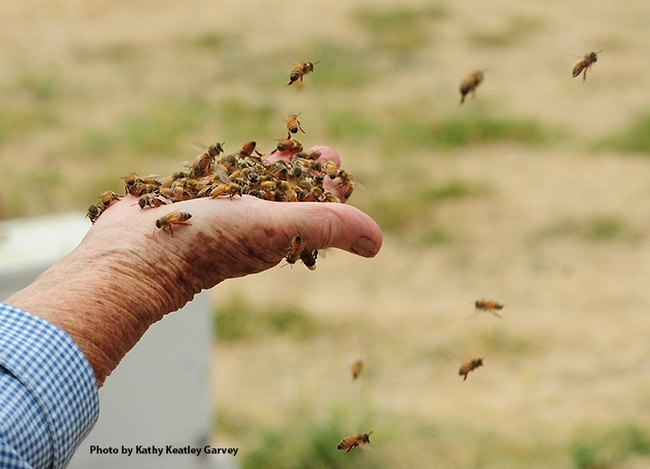
"I have decided I do not want to be the queen bee because she never ever gets to smell the flowers!" the Petaluma resident said. "I would much rather be a worker bee! The queen bee has a short life which I have already avoided, of course, and plan on many more years in the garden."
Ettamarie, in her eighth decade, is a retired teacher who taught school for 37 years, has kept bees for 30 years, and has volunteered as the leader of a 4-H beekeeping project for the past 25 years.
A worker bee, she is!
The Vacaville Museum Children's Party, open to Vacaville children between the ages of 3 and 9, will take place from 10 a.m. to 12:30 p.m. in the museum courtyard at 213 Buck Ave., Vacaville. Tickets, limited to 250, are $3 for children (same price for adults accompanying them). Tickets must be purchased at the museum on Thursdays through Saturdays between 1 p.m. and 4:30 p.m.
Coordinators Pamela King and Diana McLaughlin said the event, themed "Fun on the Farm," will include 4-H animals, a walk-around Mother Goose, face-painting, and a ring toss with a hobby horse named Trigger (the work of Peter Shull and Georganne Gebers), Among the many other activities, the youngsters will create sand art jars, craft paper crowns, plant seeds in a take-home container, and pose for photos behind a Bohart Museum of Entomology dogface butterfly cutout banner. Lunch, on the house, will include hog dogs, popcorn, chips, cookies and water.
But back to Ettamarie Peterson.
“I started beekeeping before I retired in 1998 from 37 years of teaching,” she said. “My teaching career was mostly in special education, following a few years teaching second and first grade. I became one of the first resource teachers in California back in 1980 after getting my master's degree in special education."
Active in the beekeeping industry, Ettamarie has served as president and treasurer of Sonoma County Beekeepers' Association (SCBA) "for many years" and edits the SCBA newsletter, The Monthly Extractor.
She loves "talking bees." She shows her glassed-in bee observation hive at schools and other venues. She collects swarms for her Liberty 4-H Club beekeepers. "I got involved in 4-H when my son wanted his daughters to learn how to keep bees,” she recalled. “They are both parents now so I am hoping to teach the three great-grandsons, too!"
Her interests also include bee photography, raising chickens, growing vegetables. and planting flowers “for the bees and butterflies. My granddaughter and I have a special garden in front of my house for bees and butterflies."
Ettamarie is also a longtime friend and supporter of UC Davis. She delivered a tribute to the late Eric Mussen (1946-2022), a 38-year California Cooperative Extension apiculturist and member of the Department of Entomology and Nematology faculty.
She and her husband, Ray (a non-beekeeper), enjoy life on the Peterson Ranch. "We've been married for 65 years and have 3 children, 9 grandchildren and 12 great grandchildren! What a wonderful life I have!”
Just don't call her a queen bee, please. She'd rather be a worker bee!
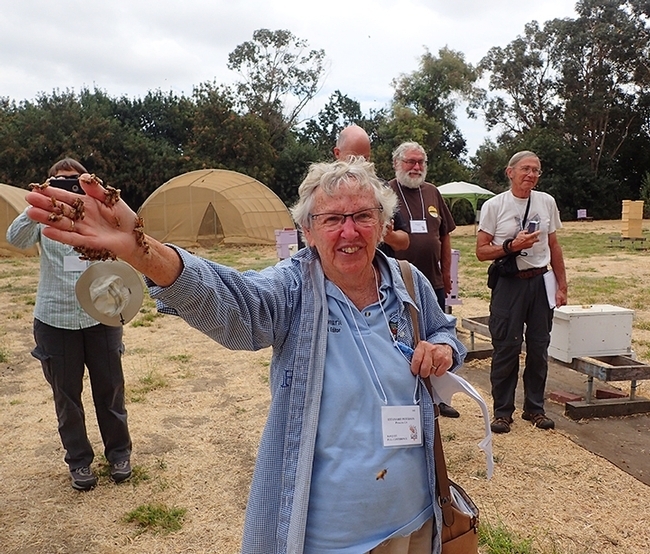
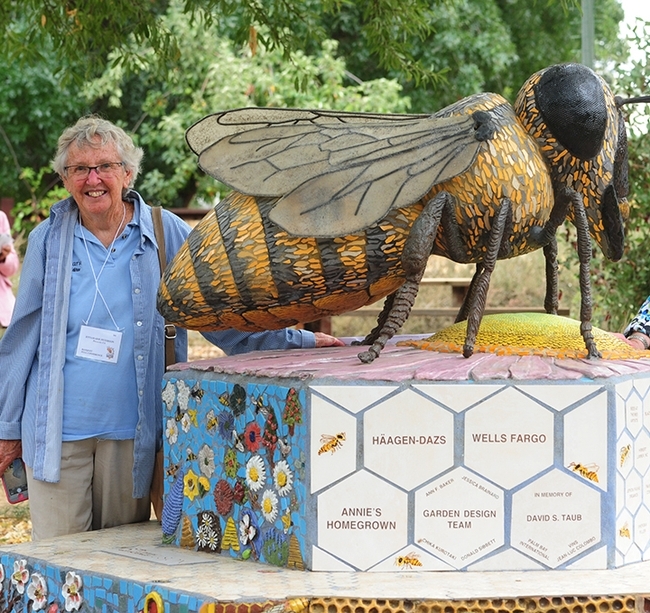
- Author: Kathy Keatley Garvey
One potato, two potato, three potato, four...
You never know what will pop up in a pollinator garden.
Meet Mr. Potato Capsid, Closterotomus norvegicus, often found on nettle, potato, clover and cannabis.
We spotted him (or her) in a Vacaville pollinator garden, where there is no nettle, potato, clover or cannabis. But it also feeds on chrysanthemum, carrots and members of the sunflower family, Asteraceae.
It popped up on a chrysanthemum blossom. The insect is green and probably a nymph as the color changes, when it's an adult, to reddish brown.
It belongs to the family Miridae. Entomologists point out that this family is the largest of true bugs belonging to the suborder Heteroptera.
At first we thought it was a lygus bug, which is also a myrid and a serious pest of cotton, strawberry and alfalfa.
But no, a potato capsid, an insect originating in the Mediterranean region. It prefers to feed on flowers, buds and unripe fruit.
Same family, though.
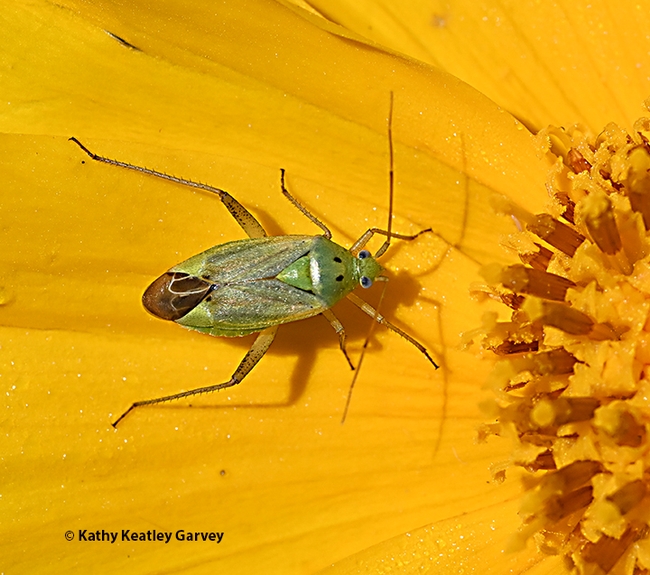
- Author: Kathy Keatley Garvey
247 years!
The seven faculty members honored at the UC Davis Department of Entomology and Nematology's recent retirement luncheon amassed an amazing 247 years of service:
- UC Davis distinguished professor James Carey, 44 years, faculty member since 1980. He retired in June.
- UC Davis distinguished professor Richard Karban, 42 years, faculty member since 1982. He retired in June.
- UC Davis distinguished professor emerita Lynn Kimsey, 35 years, faculty member since 1989. She retired Feb. 1, 2024.
- Robert Kimsey, adjunct professor, 35 years, faculty member since 1989. He retired in June
- UC Davis distinguished professor Jay Rosenheim, 34 years, faculty member since 1990. He retired in June.
- UC Davis distinguished professor Diane Ullman, 29 years, faculty member since 1995. She retired in June.
- Sharon Lawler, professor emerita, 28 years, faculty member since 1995. She retired in January 2023.
Read about them on our UC Davis Entomology and Nematology website, with links to individual stories. You may have interacted with one or more of them through their research, teaching or public service.
As molecular geneticist and physiologist Joanna Chiu, professor and chair of the department, said prior to the retirement luncheon: “Our retiring faculty will leave behind some very big shoes to fill. “They have set the bar very high for all of us with their passion to lifelong scientific exploration, perseverance to achieve intellectual and mentoring excellence, and dedication to the department, UC Davis, and external stakeholders. We are so proud to call them colleagues and mentors and they will no doubt continue to inspire us to carry on their legacy. It is with our most sincere appreciation that we wish all of them the best in their new endeavors and adventures in this next chapter of their lives."
247 years of service!
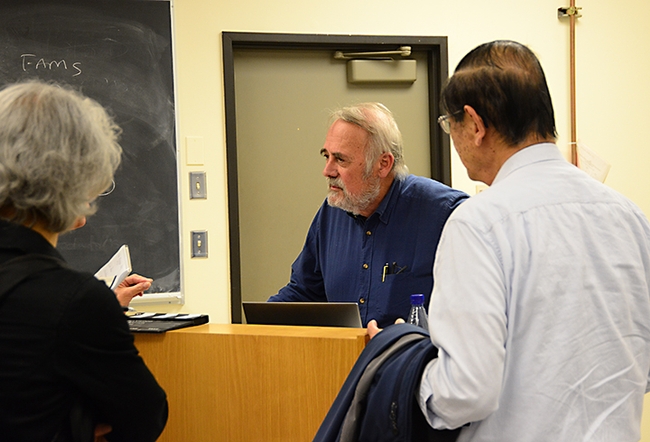
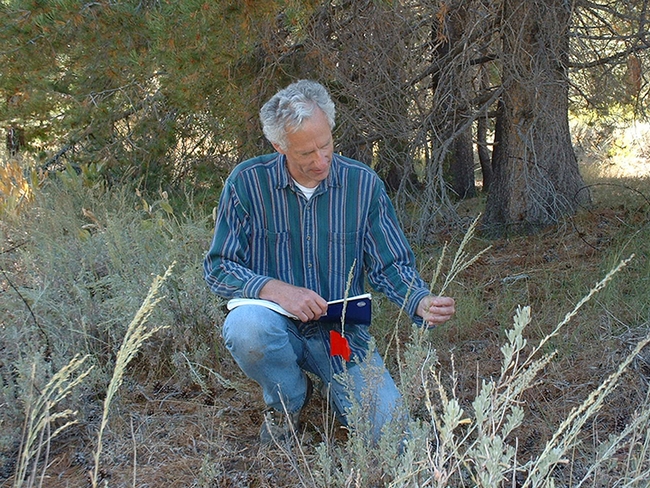
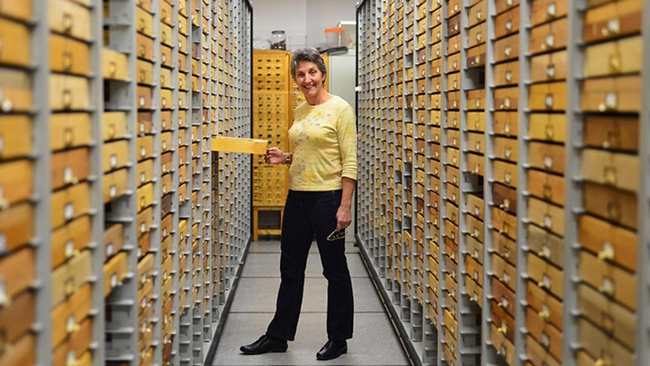
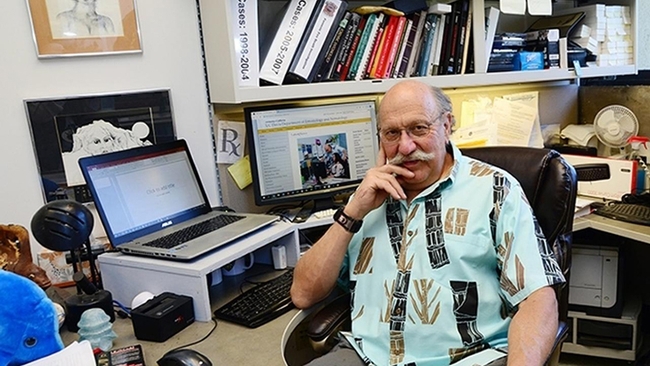
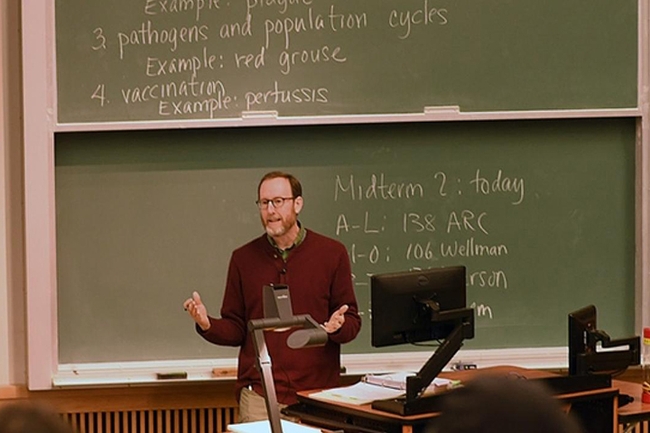
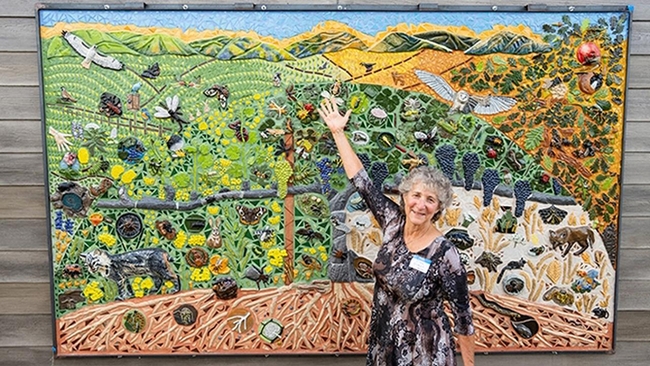
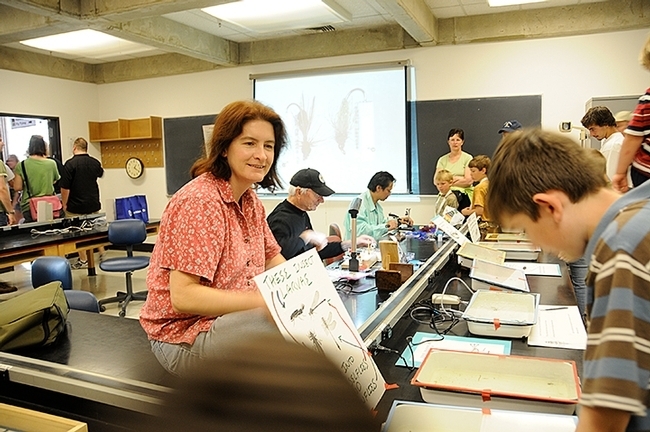
- Author: Kathy Keatley Garvey
Thought for the day...
Every time we see a honey bee "posing perfectly" on a Gaillardia, commonly known as blanket flower, we think of a quote by internationally known honey bee geneticist, Robert E. Page Jr., a UC Davis doctoral alumnus and professor and chair emeritus of the UC Davis Department of Entomology (now the Department of Entomology and Nematology):
"The impact of bees on our world is immeasurable. Bees are responsible for the evolution of the vast array of brightly-colored flowers and for engineering the niches of multitudes of plants, animals, and microbes. They've painted our landscapes with flowers through their pollination activities and have evolved the most complex societies to aid their exploitation of the environment."
That's a passage from his book, The Art of the Bee.It's also featured on his YouTube Channel, https://www.youtube.com/@artofthebee.
Rob obtained his doctorate in entomology in 1980 from UC Davis; joined the UC Davis faculty in 1989; and chaired the Department of Entomology from 1999 to 2004. After retiring from UC Davis in 2004, he accepted an appointment at Arizona State University (ASU) as founding director of the School of Life Sciences. He served as dean of the College of Liberal Arts and Sciences, 2011-2013, and provost of ASU from 2013-2015. He is now emeritus. He was recently featured in Legends, American Entomologist. (See UC Davis Department of Entomology website)
Why did Page create the free and accessible-to-all YouTube Channel? Because that's what Alexander von Humboldt (1769-1859), known as a German geographer, naturalist, explorer, and proponent of Romantic philosophy and science, would have done.
It's about making science understandable.
Check out Page's YouTube channel, including:
- Landscape Artists
- Environmental Engineers
- The Social Contract
- Superorganisms
- How to Make a Superorganism
- Song of the Queen
